How to Select Matching Loose Diamond Pairs
Breathtaking diamond earrings from White Flash.
Whether you are looking to buy a set of earrings or choosing sidestones for a 3-stone engagement ring, selecting a pair of matching loose diamonds is critical for a great looking piece of jewelry. In this write up, I’m going to show you a few easy steps to do that.
2 Important Reasons to Select Your Own Stones Instead of Buying Preset
If you are a first time shopper or new to jewelry buying, you are probably thinking: why should you go through the hassle to select your own loose diamonds?
After all, most stores offer preset earrings where they have pre-selected the diamonds on your behalf. You could simply just pay for the item to get the purchase over and done with.
Herein lies the problems and there are 2 reasons why you should be selecting your own stones: misrepresentation and cut quality.
As a consumer, I will NEVER buy preset jewelry.
This is because the vast majority of these goods utilize ungraded diamonds and most jewelers abuse this to misrepresent diamond quality. For example, you will commonly see stuff like G-H color ratings or SI1-SI2 grading. So, what exactly are you buying?
Given that diamond prices can change with their specifications, how do you know whether you are paying the right amount for the right quality? You can’t. And let me tell you that these grades are typically at least 2-3 grades off. This means the actual piece of jewelry would likely be J-K color or I2-I3 clarity in reality.
The second reason lies in mediocre cut quality. Assuming that a vendor sells preset earrings with accompanying GIA reports, I can tell you with certainty that 99.99% of goods in the market have mediocre cut standards (sparkle).
If you want a piece of truly high quality jewelry, you will have to select your own stones based on tangible data to ensure ideal light performance. Period.
The 4Cs and Guidelines to Diamond Pairing
Diamonds are graded based on the 4Cs: cut, carat, color and clarity. And unlike choosing a solitaire engagement ring, selecting a well matched diamond pair is a little more complex as it involves multiple stones.
Here are my guidelines to achieve a balanced and complementary look when buying matching loose diamonds:
1) Relative physical size should be similar. (± 0.1 to 0.2 mm)
2) Color grades should be within 1 grade of difference.
3) Proportions should be similar (i.e. table size ±1%)
4) Optical performance of the stones should be similar.
The rational is pretty straightforward and easy to understand if you think about it. For example, if you are shopping for a pair of earrings, you don’t want to have one side of the earrings to have a significantly bigger/smaller appearance than the other.
The proportions and optical performance should be similar if you want the diamonds to blend well together. That’s the ideal look most people go for unless you have specific reasons to do otherwise.
* Noticed that clarity was never mentioned as part of the guidelines? As long as a diamond is eyeclean, it doesn’t matter if it is an SI2 or a VVS2 diamond. They will look identical to the naked eyes.
Case Study: Mismatched Diamonds vs Well-Matched Pairs
I’ve selected 2 sets of diamonds to show you the visual effects of a mismatched pair vs a well-matched pair. All 4 are one carat round brilliant cut diamonds that are graded by triple excellent grades by GIA. I want you to click on both images to view the video listings and compare them yourself.
In the first set of diamonds, they are obviously mismatched and have significant variances due to cut quality issues. Not only are they less lively, the scintillation patterning of the diamonds are also adversely affected.
If you compare them to my guidelines above, you will realize that this set of diamonds violated a number of my recommendations.
In the following pair of diamonds, you can see that they look very similar and are very well-matched. Not only are both diamonds eyeclean, they also exhibit top notch optical performance.
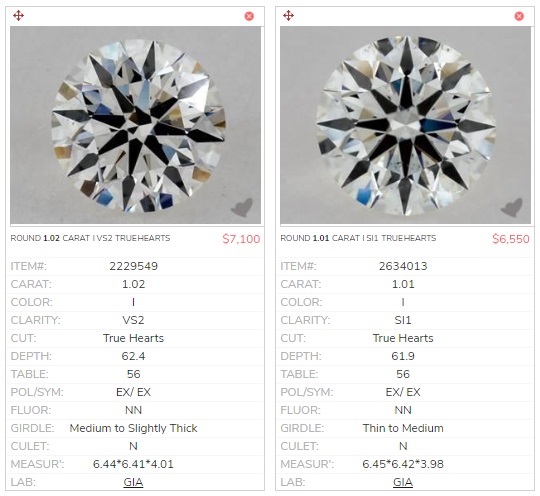
Click to view the diamond video listings above: SKU#2229549 & SKU#2634013
If you did some price comparison, you will realize that the 2nd set of diamonds are slightly more expensive. That’s because higher quality and better cut diamonds cost more and let me tell you, they are certainly well worth the extra money.
Would you rather end up with a pair of lifeless diamonds or a pair that is full of sparkle and brilliance?
Design Your Own Earrings in 2 Simple Steps (& Ideas)
Diamond earrings are symbols of elegance and are versatile accessories that can go well with various dressing styles for different occasions. Since we are already on the topic of selecting matching diamonds, I want to show you how easy it is to create your own earrings with your new found knowledge.
Step #1 – Decide on Your Earring Design
James Allen offers a wide range of settings for you to choose from. What I like about them is the use of HD videos which enables you to visualize how your finished jewelry would look like in real-life.
Besides James Allen, vendors like White Flash and Blue Nile are also highly recommended for their ease of shopping and depth of diamond selection. I encourage you to visit them and check out the different designs they offer.
Here, I want to show you some of my favorite settings and hopefully, this will help you generate some ideas for your own purchase. To find out more details on a particular design, simply click on the images…
Step #2 – Browse for a Loose Diamond Pair
Using the inventory search filters, you can narrow down selections based on your budget and preferences of the 4Cs. In a matter of minutes, you would be able to to cherry pick 2 matching diamonds. And viola! It’s that easy.
So, there you have it. Finding a pair of matching diamonds for earrings or multi-stone rings is really not that hard. All you need to do is to put in a little effort and you will be able to design your own jewelry based on your needs.
You shouldn’t let the vendor dictate the quality of the diamonds you are getting with their preset jewelry; especially if you expect high quality stuff (most will simply take the chance to offload unsaleable goods to dumb customers).
The bottomline is, it doesn’t cost you more when you choose diamonds for yourself and there’s no need for you to work around your specifications by limiting yourself to preset jewelry. It’s a no-brainer to cherry pick your own stones.
With that, we’ve come to the end of this article. If you have any questions or thoughts, feel free to leave a comment below!
Related Articles
Leave A Comment

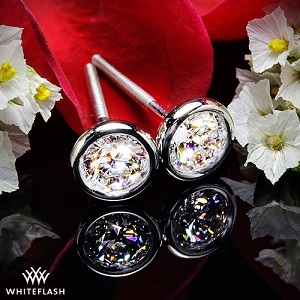
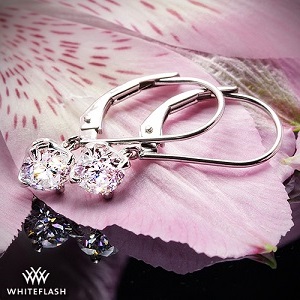
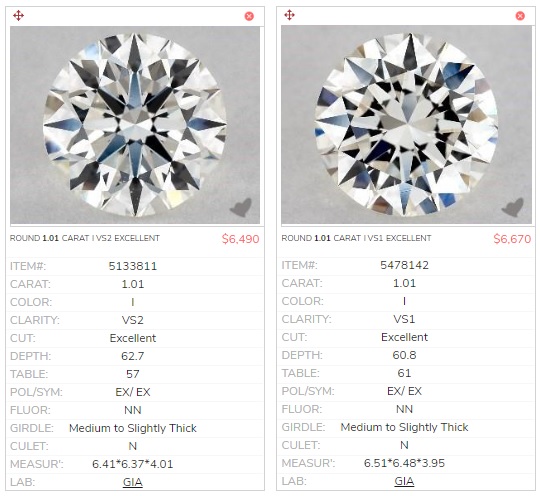
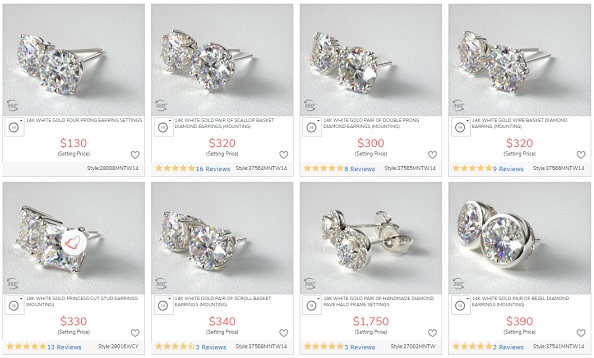
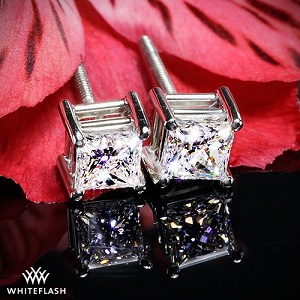
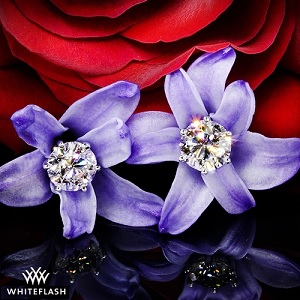
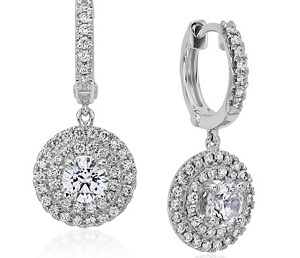
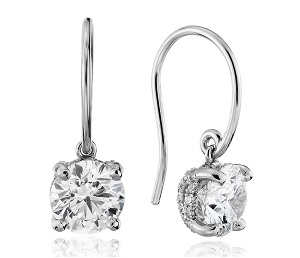

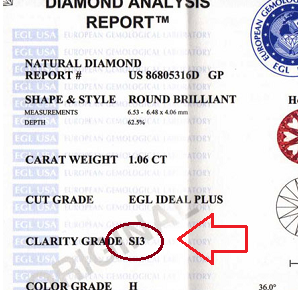
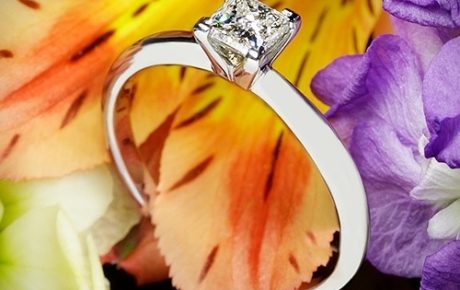
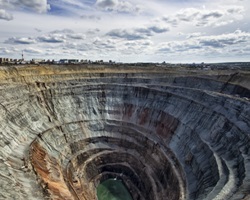









8 Comments
What do you think of these two 1 ct ideal cut diamonds from James Allen?
Here’s a quick summary of the diamond specifications extracted from their respective grading reports.
There are also some other scope images that I need help in with analysis.
So, I checked out the listings to review the tangible data.
From the idealscope images, more reds means that the diamond is reflecting back more light. This results in the sparkle and brilliance which make diamonds so enticing to look at.
Optical symmetry through hearts and arrows viewer
Besides having Idealscope information to help you determine a diamond’s brilliance, I also reviewed the H&A images which point to very well cut diamonds as well. That’s the thing I like about them. James Allen is one of the few vendors that actually offer magnified videos of their inventory.
This enables you to check for a diamond’s eye cleanliness when shopping within the SI clarity grades. You don’t have to pay more for higher clarity if the naked eye can’t pick out any inclusions (eyeclean).
Good work in picking these out. It’s a great pair of loose diamonds for earrings.
*Update: The above diamonds had been sold and no longer exist in JamesAllen’s listing )
GIA diamonds are expensive compared to the diamonds I get from my jeweler. The certified diamonds they sell cost about 80% of GIA diamonds and I get the convenience of them finding a matching pair of earrings for me. Saves me time in doing research.
Well, I’ve mentioned this specifically in the write up. With unreliable certification, you expose yourself to misrepresentation. If quality doesn’t matter and overpaying for mediocre goods doesn’t matter, by all means go ahead and get preset goods.
You can choose to buy into the illusion and bury your head in the sand while getting ripped off. And in which case, why even bother researching in the first place which you clearly did by visiting this webpage?
You should read this: https://beyond4cs.com/engagement-ring/beware-of-cheap-diamond-deals/
And now that you know about this and if you still knowingly make a purchase of uncertified diamonds, then you really deserve to get ripped off.
Are there any rules or guidelines to follow when selecting loose diamond pairs for fancy shapes? And where are the best places to get them. Any recommendations would be great.
The guidelines pretty much remain the same. For fancy shape diamonds, it may be a little more tricky to find diamonds with matching length to width ratios and appearance as they need to be analyzed on a case by case basis. I’ve actually compiled a list of the best places to buy earrings you can refer to here.
Paul, I’m looking to match 5 stones for a 5 stone ring. A few of the stones I’ve shortlisted have a “cloud” as either the only, or the first, inclusion listed. Because the stones I’m looking at are between .42 and .45ct, there is no inclusion map on the GIA reports.
The stones for the most part look eye clean (particularly the tables), but someone told me the cloud inclusion could give the stone a cloudy or milky look. What are your thoughts on cloud inclusions, specifically for the size I’m looking for and given the fact that the 360 pictures don’t really show these “cloudy” characteristics? Thanks for any guidance you can provide.
It depends on a case by case basis. If the diamond is in the VS clarity grade or better (by GIA), then the chances of these diamonds being hazy are very low. I’ve written about it here: https://beyond4cs.com/grading/other-comments/